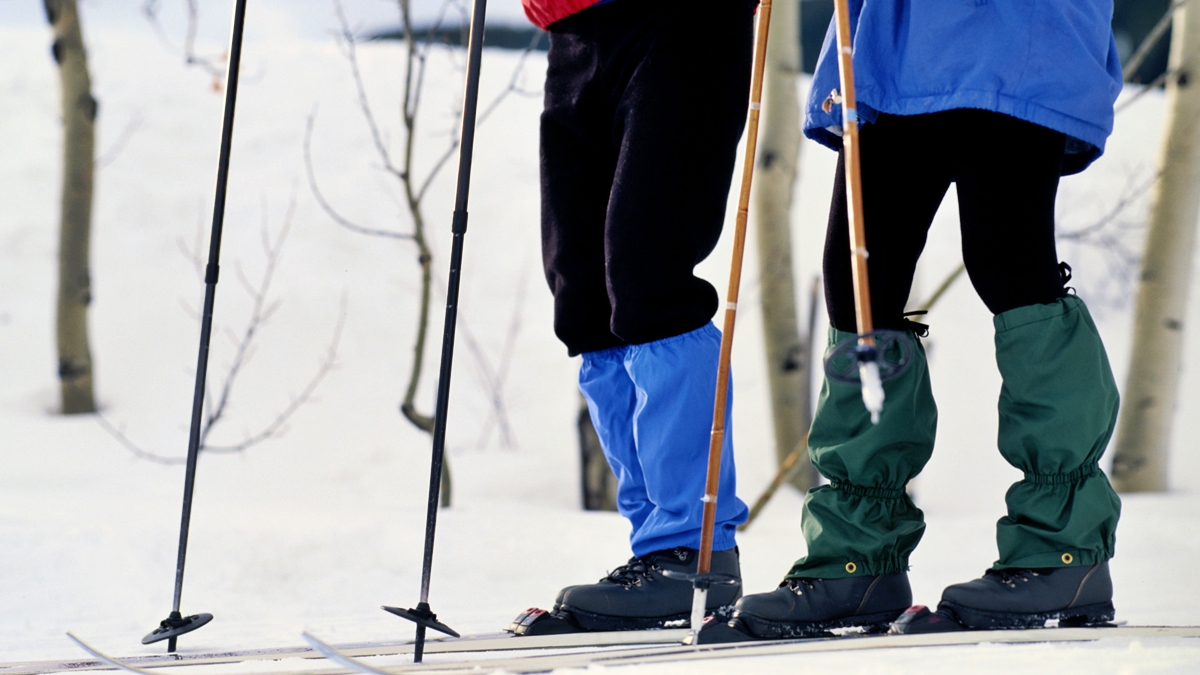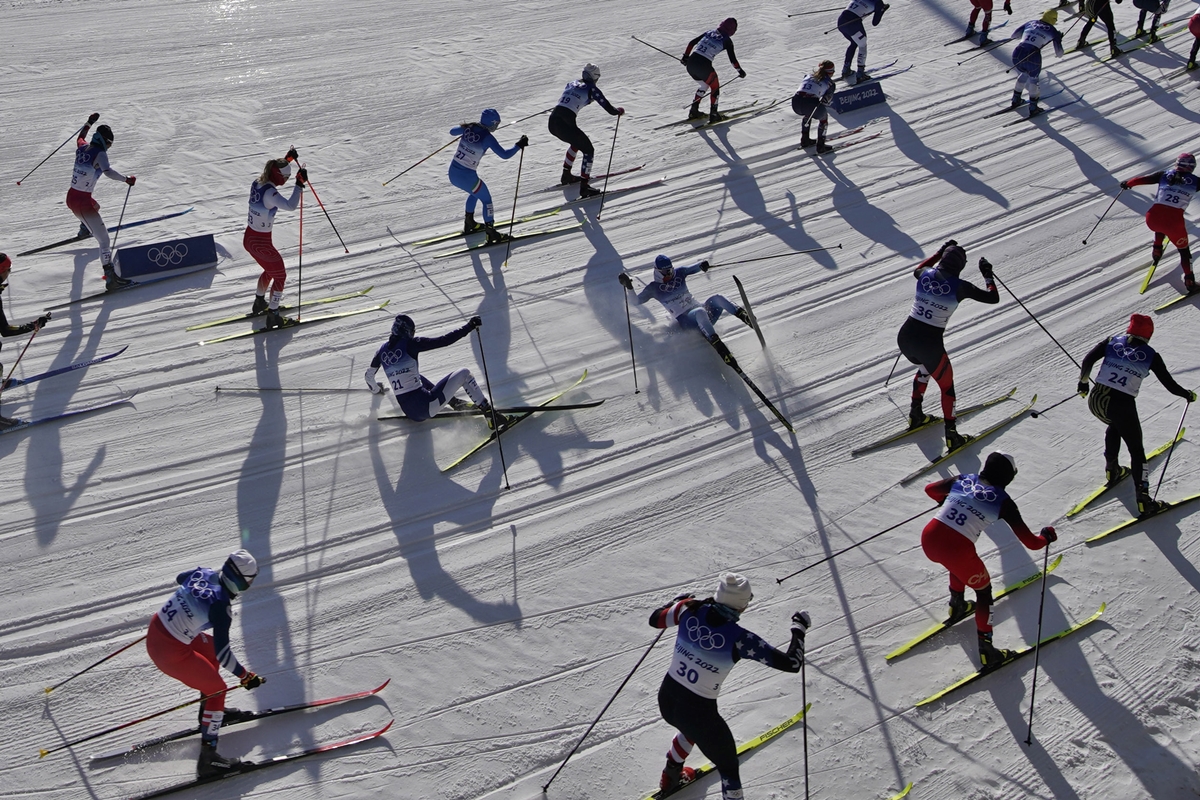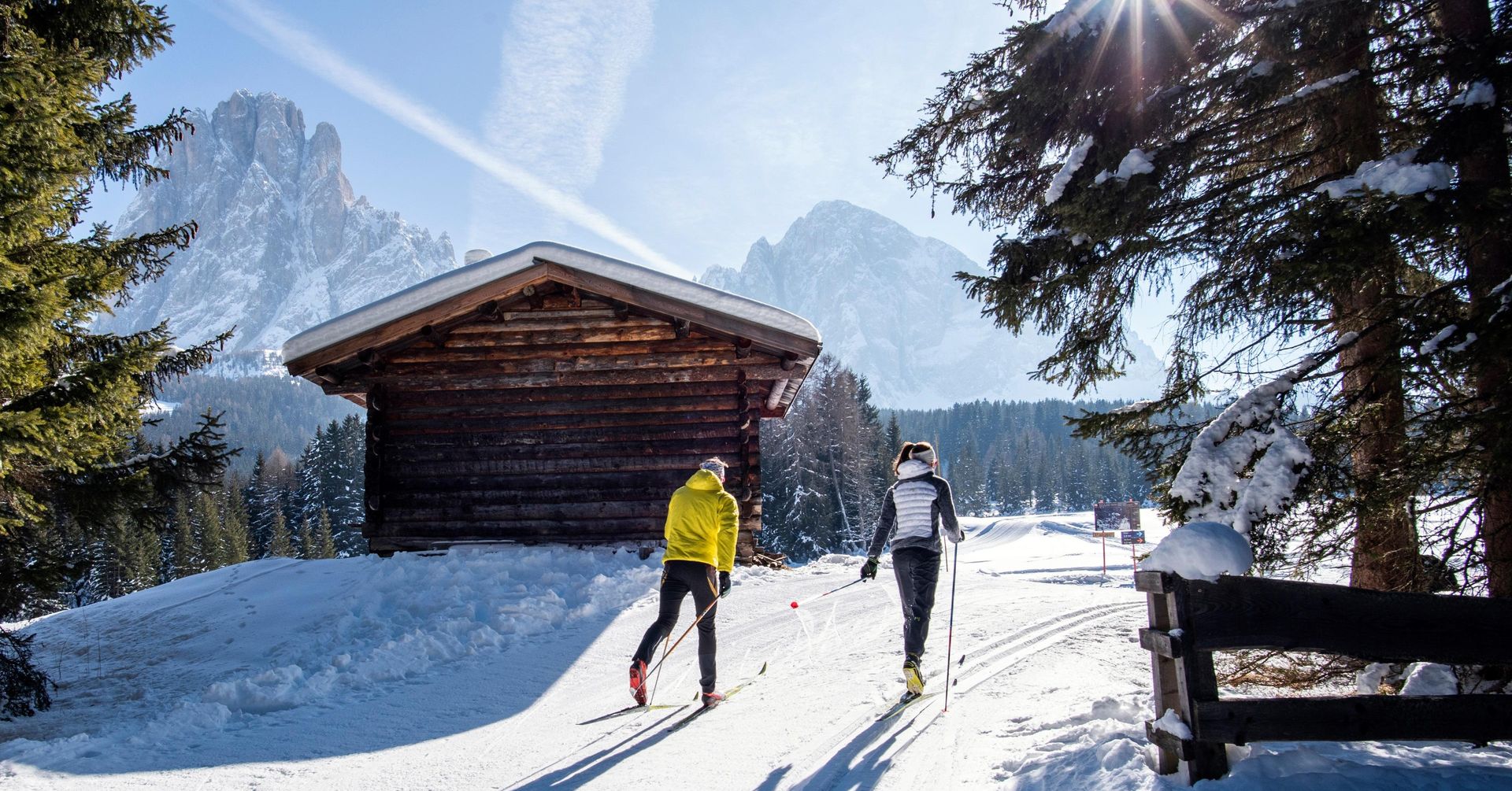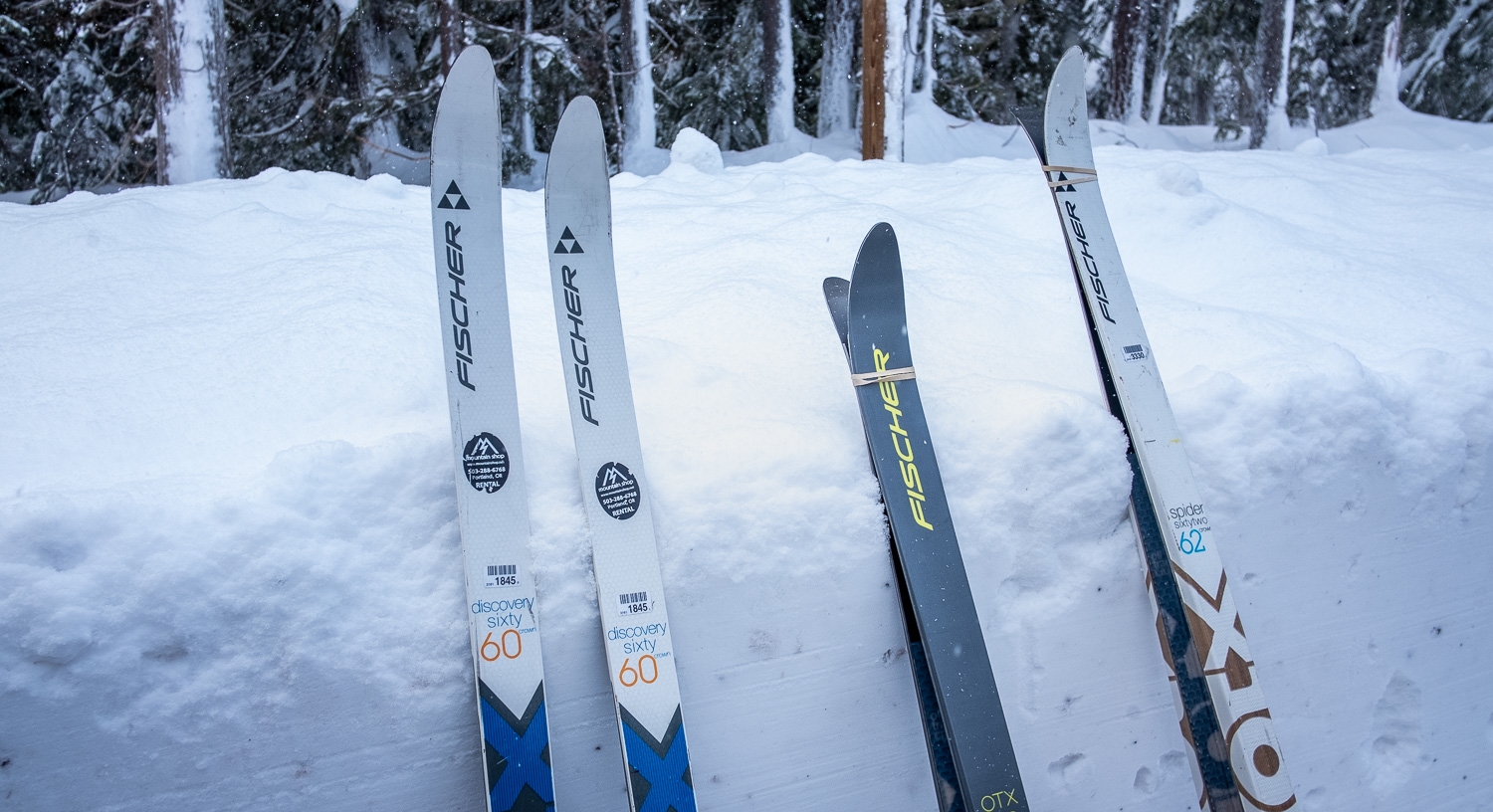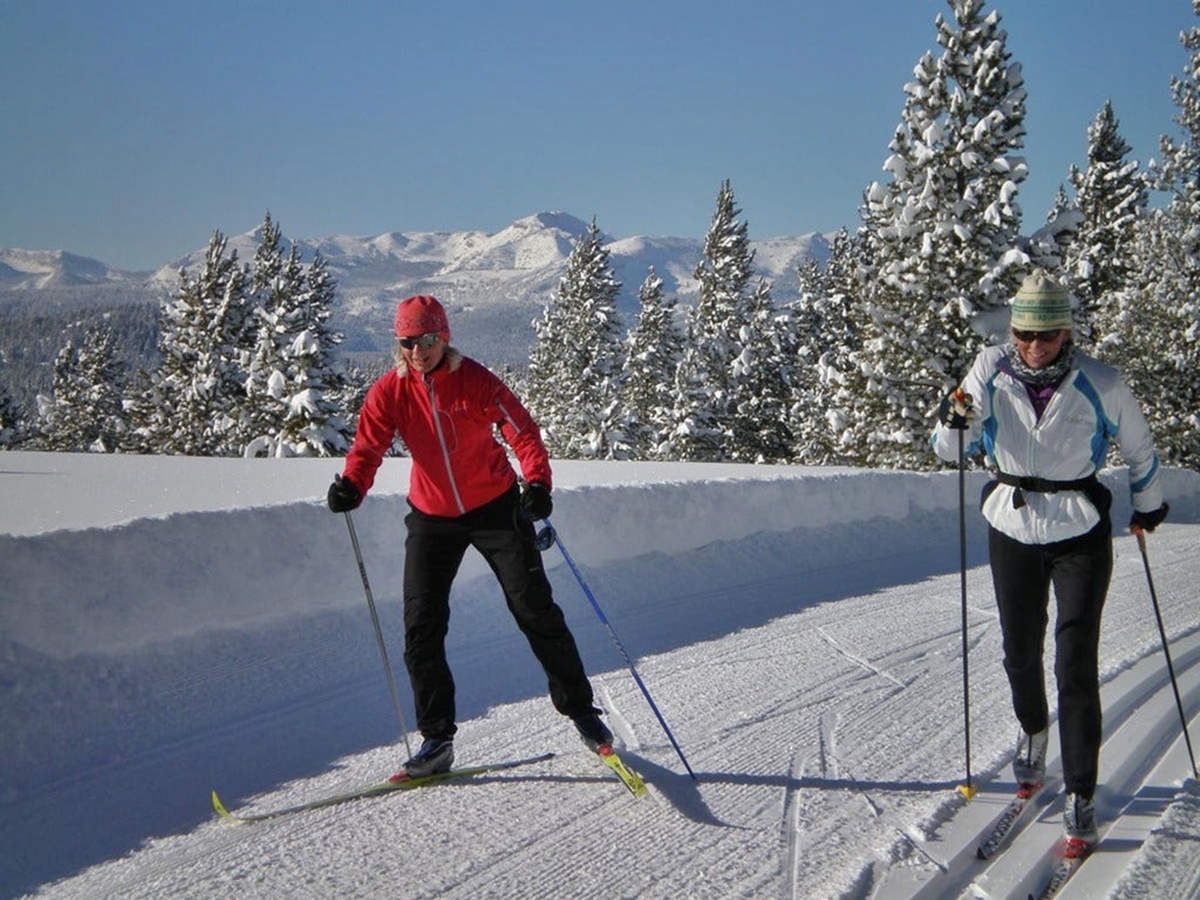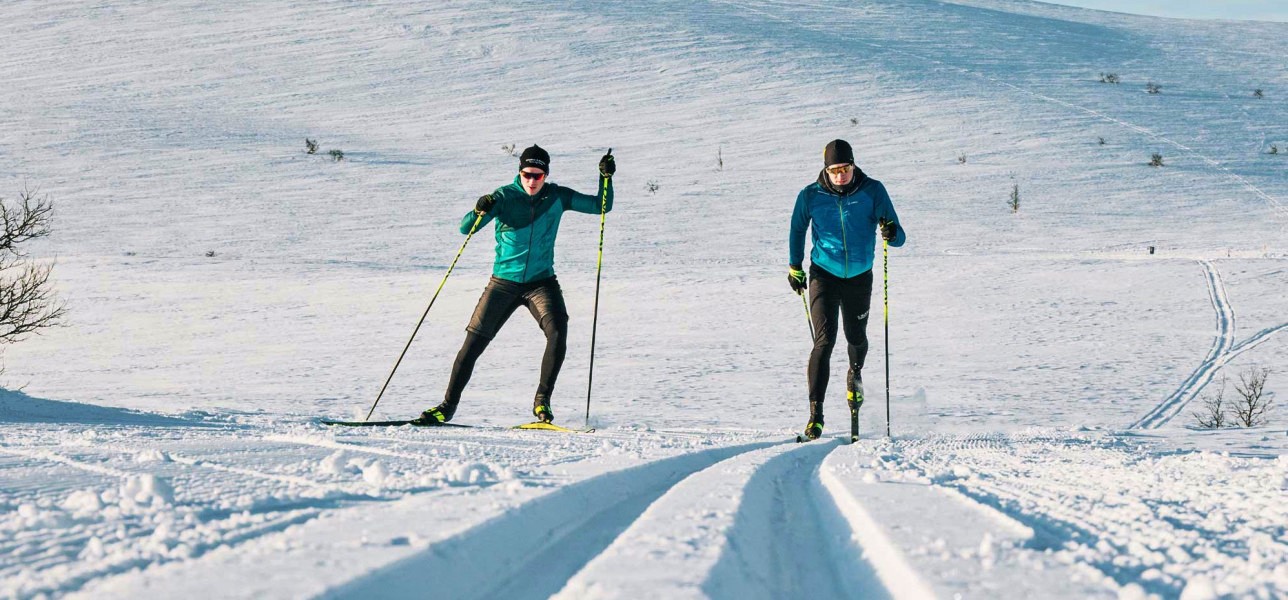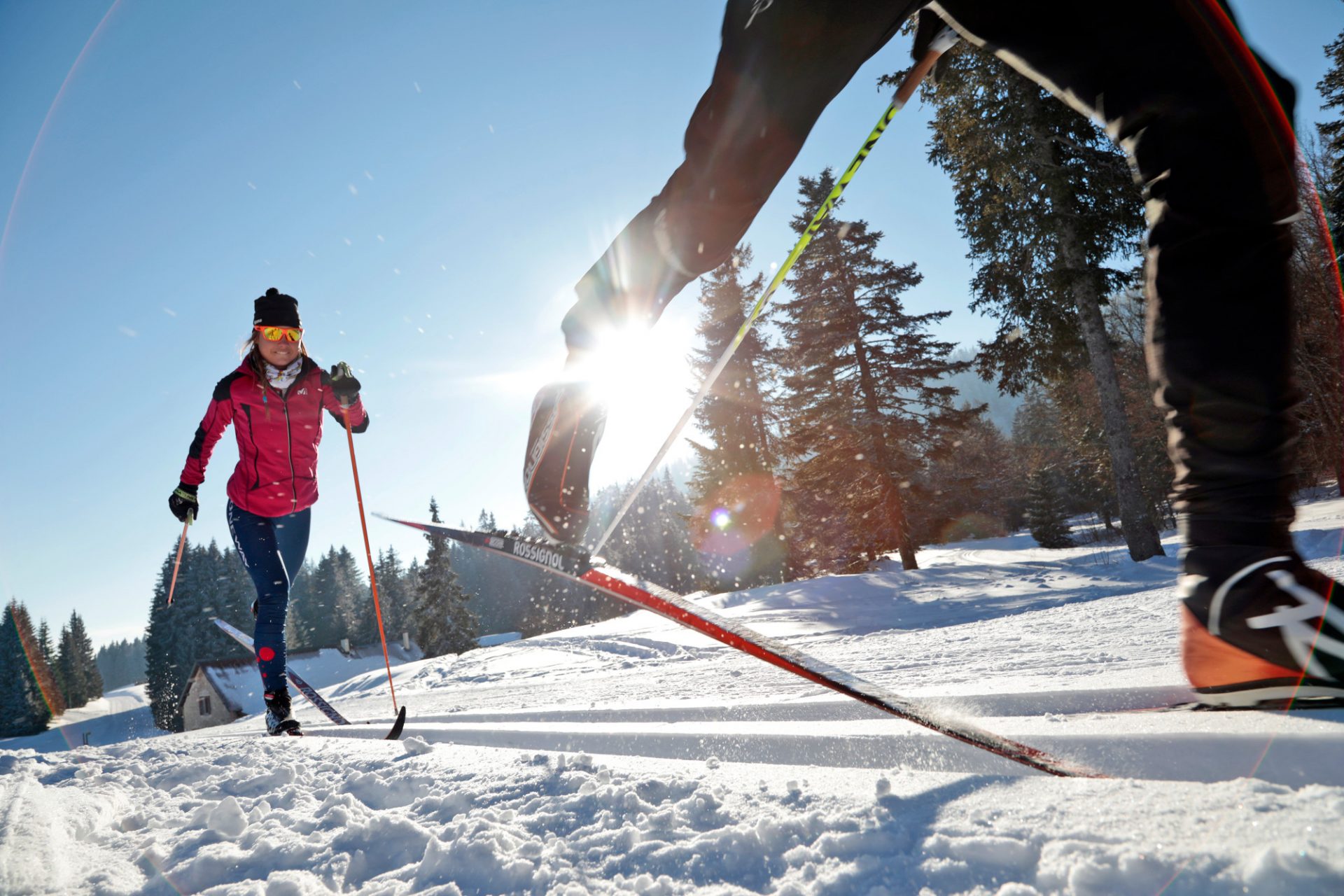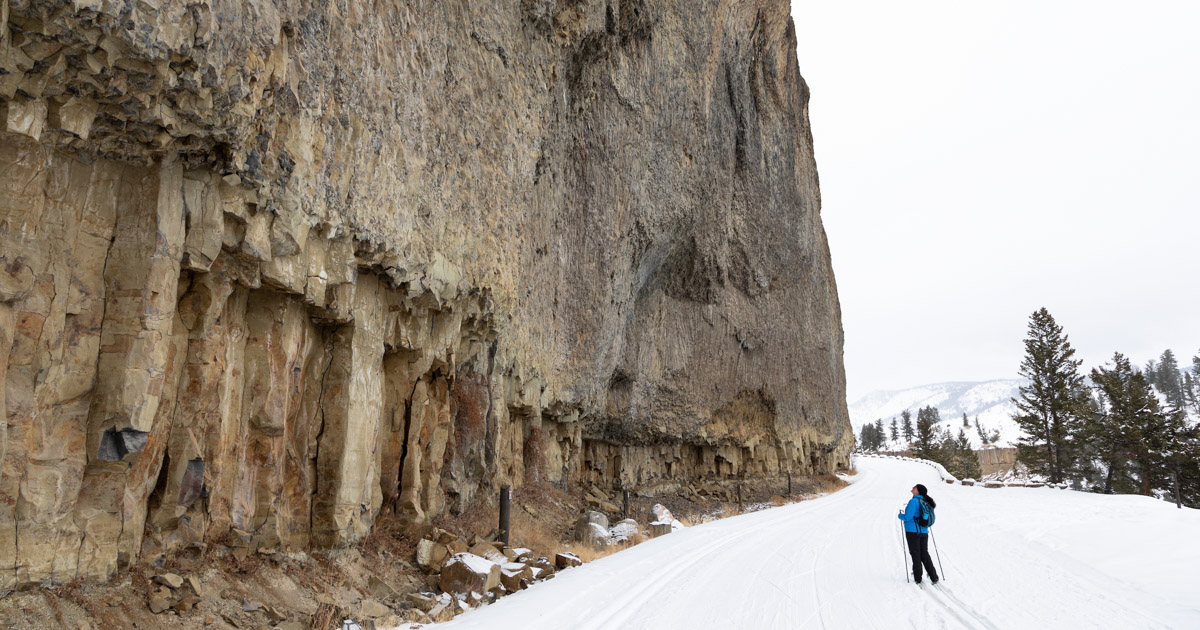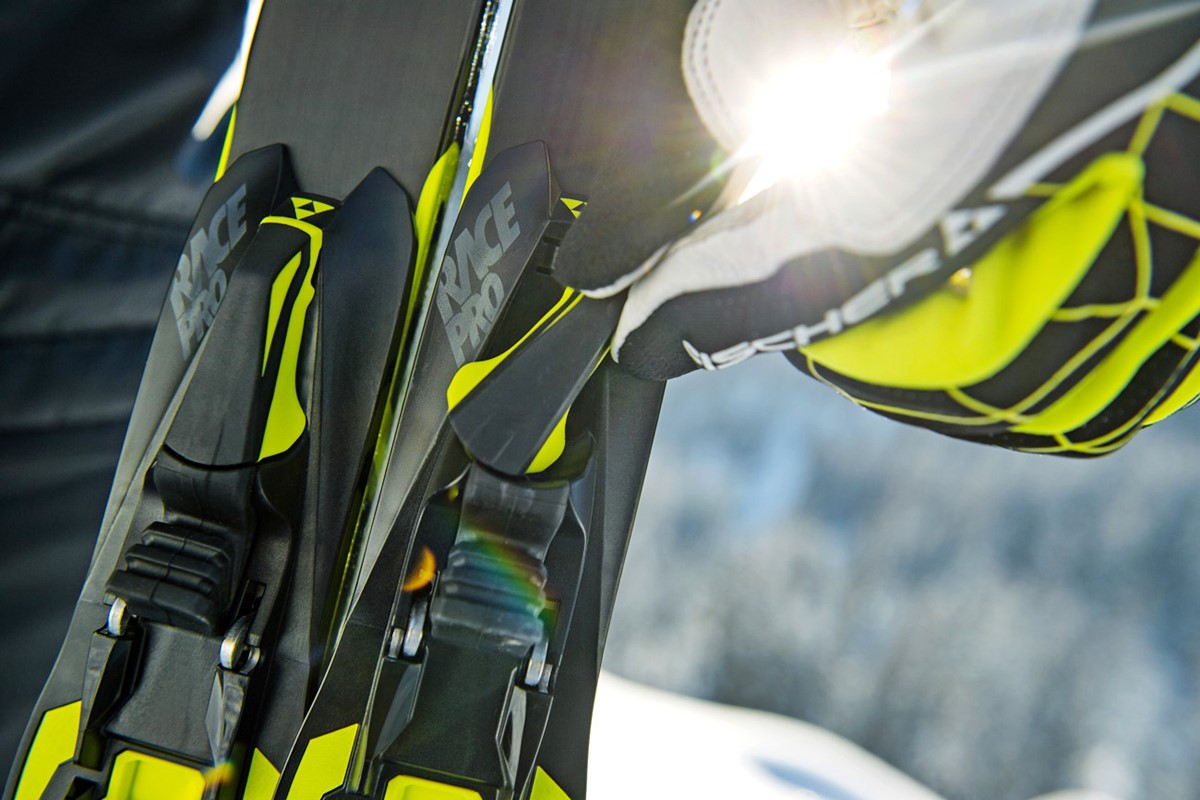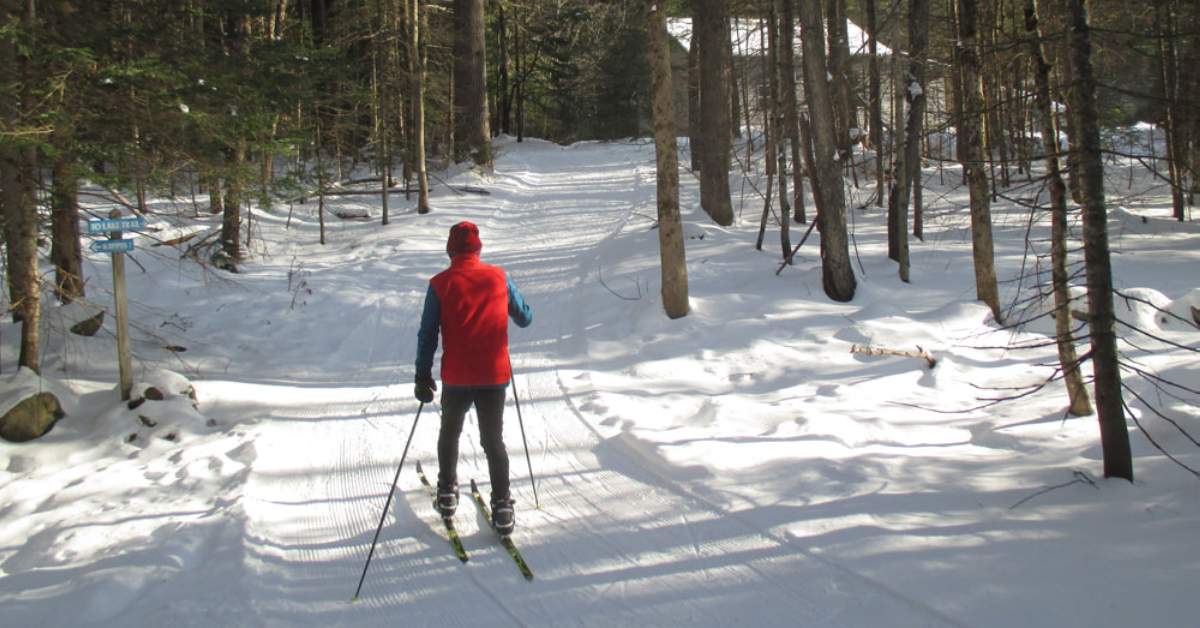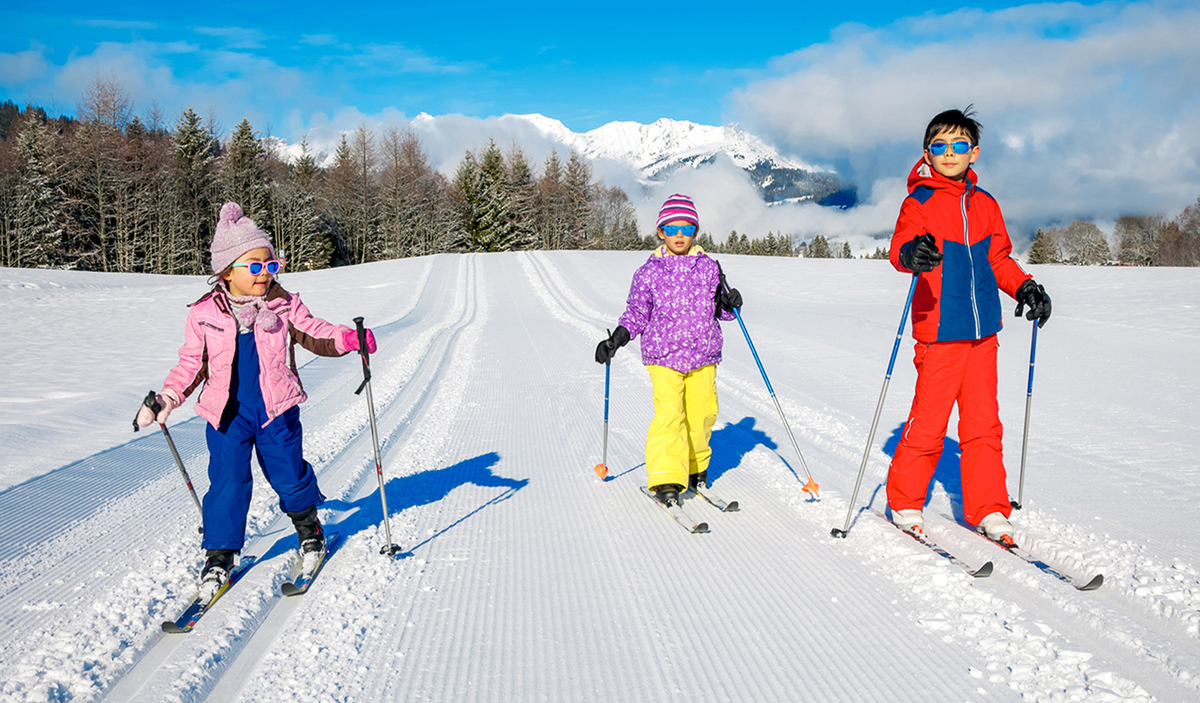

Featured
How To Pick Cross Country Ski For Kids
Modified: January 2, 2024
Looking for the perfect cross country ski for your little ones? Discover our featured tips on how to pick the best cross country skis for kids and create unforgettable winter memories.
Introduction
Welcome to the exciting world of cross country skiing for kids! Whether your child is a beginner or an aspiring young athlete, choosing the right cross country skiing equipment is crucial for their comfort, safety, and enjoyment on the slopes. In this article, we will guide you through the process of selecting the perfect cross country skis for your little ones.
As parents, we want our children to engage in physical activities that are not only fun but also promote their overall development. Cross country skiing is a fantastic sport that offers numerous benefits, including improved cardiovascular fitness, enhanced balance and coordination, and the opportunity to explore the great outdoors. By investing in the appropriate equipment, you can ensure that your child has the best experience possible while enjoying this exhilarating winter activity.
With so many options available on the market, it’s easy to feel overwhelmed when trying to choose the right cross country skis for your kids. But fear not! We’re here to help you navigate through the various factors to consider, such as ski length, bindings, boots, and safety gear, so you can make an informed decision that suits your child’s needs and abilities.
Join us as we delve into the world of kids’ cross country skiing equipment. Discover the importance of choosing the right skis, the factors to consider before making a purchase, and practical advice on properly fitting and maintaining the equipment. By the end of this article, you’ll have all the knowledge you need to confidently select the perfect cross country skis for your child.
Importance of Choosing the Right Cross Country Ski for Kids
Choosing the right cross country ski for your child is essential for their overall skiing experience. The right equipment can make a significant difference in their comfort, performance, and safety on the slopes. Here are some reasons why selecting the appropriate cross country skis for kids is so important:
- Comfort: Ill-fitting skis can cause discomfort, leading to a less enjoyable skiing experience for your child. The right ski size, weight, and flex will ensure maximum comfort and allow your child to ski for longer periods without fatigue or pain.
- Performance: Using the correct skis can significantly impact your child’s performance on the slopes. Skis that are too long or too short will make it difficult for them to maintain balance and proper skiing technique. The right skis will provide the right amount of grip and glide, allowing your child to ski efficiently and confidently.
- Safety: Safety should always be a priority when it comes to kids’ skiing. Using the right skis with proper bindings and boots will ensure that your child’s feet are securely attached to the skis, reducing the risk of accidents and injuries. Additionally, using skis appropriate for your child’s skill level and the terrain will further enhance safety on the slopes.
- Progression: Choosing the right cross country skis for your child not only provides immediate benefits but also allows for continued progression in their skiing skills. As your child improves, they may outgrow their current skis or require skis with different characteristics. Opting for skis that are adjustable or sizing up when necessary will enable your child to continue advancing their skiing abilities.
- Enjoyment: Ultimately, the right cross country skis will enhance your child’s enjoyment of the sport. When your child is comfortable, performing well, and feeling safe, they are more likely to have a positive skiing experience and develop a lifelong passion for the sport.
Now that we understand the importance of choosing the right cross country ski for kids, let’s explore the factors to consider before making a purchase. By considering these factors, you can ensure that you select the perfect ski equipment to meet your child’s needs and set them up for success on the slopes.
Factors to Consider Before Buying Cross Country Skis for Kids
When purchasing cross country skis for kids, there are several important factors to consider to ensure you make the right choice. By carefully assessing these factors, you can select skis that are suitable for your child’s age, skill level, and skiing goals. Here are the key factors to consider before buying cross country skis for kids:
- Age and Size: The age and size of your child play a significant role in determining the appropriate ski length. Younger children will require shorter skis, while older and more experienced kids may need longer skis. Consider your child’s height, weight, and overall physical development when selecting the right ski size for optimal performance and safety.
- Skiing Style: Different skiing styles require different types of skis. Classic skiing involves a straight-ahead technique, while skate skiing requires more dynamic movements. Determine which style your child will be engaging in and choose skis specifically designed for that style.
- Flex: The flex of the ski refers to its stiffness or flexibility. Softer flex skis are more forgiving, making them suitable for beginners or lighter-weight kids. Stiffer flex skis provide better power transfer and are ideal for more advanced skiers. Consider your child’s skill level and weight when choosing the appropriate flex for their skis.
- Terrain: Consider the type of terrain your child will be skiing on. Skis designed for groomed trails may have different characteristics compared to those intended for off-trail or backcountry skiing. Choose skis that are suitable for the terrain your child will be exploring to ensure optimal performance and enjoyment.
- Bindings: Bindings are an essential component of cross country skis, as they securely attach the boots to the skis. Look for bindings that are easy to use, provide ample support, and are compatible with your child’s boots. Adjustable bindings can be particularly useful for growing kids who may need to adjust their ski size periodically.
- Boots: Properly fitting boots are crucial for comfort and performance. Look for boots that provide sufficient ankle support, insulation for warmth, and a snug but not overly tight fit. Also, ensure that the boots are compatible with the bindings on the skis you are considering.
- Budget: Consider your budget when selecting cross country skis for kids. While it’s important to invest in quality equipment, there are options available at different price points. Determine your budget range and look for skis that offer good value for money without compromising on quality and performance.
By considering these factors before buying cross country skis for kids, you can make an informed decision and select skis that are well-suited to your child’s needs and abilities. In the next section, we will explore the specific considerations when it comes to ski length and weight for kids.
Ski Length and Weight Considerations
When it comes to choosing cross country skis for kids, ski length and weight considerations are crucial factors to take into account. Selecting the appropriate ski length based on your child’s weight and skill level is essential for their performance and enjoyment on the slopes. Here’s what you need to know:
Ski Length: The length of the ski determines how well it will perform in different snow conditions and terrains. For kids, the ski length should be based primarily on their weight. Many ski manufacturers provide recommended ski length ranges based on weight to help you make the right choice. It’s important to note that these recommended lengths are guidelines, and other factors such as skiing ability and preference should also be considered. Generally, shorter skis are easier to maneuver and control, making them suitable for beginners or younger children. Longer skis provide more stability and speed, making them preferable for more advanced skiers.
Weight Considerations: The weight of your child has a direct impact on how well the skis perform. Skis that are too stiff for a child’s weight may lack proper flex, limiting their ability to grip and glide effectively. On the other hand, skis that are too flexible for a child’s weight may not provide enough stability and power transfer. It’s important to choose skis that are specifically designed for the weight range of your child to ensure optimal performance and safety.
In addition to weight and ski length, other factors such as skiing ability, terrain, and personal preference should also be considered. If your child is just starting out or is still developing their skiing skills, it’s advisable to choose skis on the shorter side of the recommended length range. This will allow them better control and maneuverability as they learn the basics. As they become more proficient, you can consider transitioning to longer skis for better speed and stability.
Keep in mind that these are general guidelines, and every child is unique. It’s important to assess your child’s abilities and consult with knowledgeable ski professionals when making the final decision on ski length and weight considerations. They can provide valuable insights and recommendations based on your child’s specific needs.
Once you have determined the appropriate ski length and weight for your child, the next step is to consider the bindings and boots that will accompany the skis. In the next section, we will explore the different options available for kids’ cross country ski bindings and boots.
Bindings and Boots for Kids’ Cross Country Skis
When it comes to choosing bindings and boots for kids’ cross country skis, it’s important to prioritize comfort, support, and compatibility. The right bindings and boots will ensure that your child’s feet are securely attached to the skis, allowing for optimal performance and safety on the slopes. Let’s explore the considerations for selecting bindings and boots:
Bindings: Cross country ski bindings play a crucial role in connecting the boots to the skis. There are two main types of bindings: NNN (New Nordic Norm) and SNS (Salomon Nordic System). It’s important to ensure that the bindings you choose are compatible with both your child’s boots and the type of ski they will be using. Many ski packages come with bindings included, but it’s essential to double-check that they are suitable for your child’s needs. Adjustable bindings are advantageous for growing kids, as they can accommodate different boot sizes throughout their development.
When selecting bindings, consider the ease of use, adjustability, and compatibility with your child’s boots. It’s also important to ensure that the bindings provide adequate support and stability, allowing for efficient power transfer from the boots to the skis.
Boots: Comfortable and well-fitting boots are essential for an enjoyable cross country skiing experience. Look for boots that provide sufficient ankle support to help maintain proper skiing technique. The boots should also be insulated to keep your child’s feet warm in cold weather conditions. Be sure to check the compatibility of the boots with the bindings you have selected. Boots that are compatible with both NNN and SNS bindings are widely available, allowing for more flexibility when it comes to choosing the right equipment.
When trying on boots, ensure that there is enough room for your child’s toes to wiggle while still providing a snug fit around the ankle and heel. Remember, comfort is key, as ill-fitting or uncomfortable boots can quickly lead to discomfort and fatigue on the slopes.
When it comes to bindings and boots, it’s always a good idea to consult with a knowledgeable ski shop professional or experienced skiers. They can provide valuable guidance and recommendations based on your child’s specific needs and skiing style.
Now that we’ve covered the essential considerations for selecting cross country ski bindings and boots for kids, let’s move on to exploring the different types of cross country skis suitable for young skiers.
Types of Cross Country Skis Suitable for Kids
When it comes to choosing cross country skis for kids, there are different types available to cater to their skill level, skiing style, and preferred terrain. Understanding the different options will help you make an informed decision. Here are the main types of cross country skis suitable for kids:
- Classic Skis: Classic skis are the most common type of cross country skis and are suitable for all skill levels, including beginners. They are designed for groomed trails and feature a shorter, waxable or waxless base, allowing for efficient grip and glide. Classic skis are perfect for kids who prefer a straightforward skiing technique with a straight-ahead motion.
- Skate Skis: Skate skis are designed for more advanced skiers who enjoy a faster and more dynamic skating technique. They feature a longer and stiffer design, allowing for effective power transfer and better speed. Skate skis are suitable for kids who have developed good balance and coordination, as they require more strength and technique compared to classic skiing.
- Skin Skis: Skin skis are a popular option for kids who enjoy exploring off-trail or ungroomed terrain. They have a special base with built-in synthetic skins that provide excellent grip on various snow conditions, including icy or soft surfaces. Skin skis offer the advantage of not requiring waxing while still providing reliable grip and glide.
Each type of cross country ski has its own advantages and considerations, so it’s essential to choose the one that aligns with your child’s skiing style and preferences. For beginners or younger kids, classic skis are typically the best choice as they are easier to maneuver and offer stable performance. As your child progresses and gains more experience, they can transition to skate skis for a more dynamic and challenging skiing technique.
It’s worth noting that many ski manufacturers offer kids’ ski packages that include bindings and boots specifically designed for a particular type of ski. These packages take the guesswork out of finding compatible equipment and provide a convenient option for getting started.
When selecting the type of cross country skis for your child, it’s also important to consider factors such as the terrain they will be skiing on and their personal preferences. If your child enjoys exploring backcountry trails or venturing off the beaten path, skin skis can provide a great option for versatile performance.
By understanding the different types of cross country skis available for kids, you can choose the right equipment that matches their skill level, style, and terrain preferences. In the next section, we will provide essential tips for properly fitting kids’ cross country skis to ensure their comfort and safety on the slopes.
Tips for Properly Fitting Kids’ Cross Country Skis
Properly fitting cross country skis are essential for your child’s comfort, performance, and safety on the slopes. Ill-fitting skis can cause discomfort, hinder their skiing technique, and increase the risk of accidents. Here are some important tips for ensuring that your child’s cross country skis are properly fitted:
- Consult Sizing Charts: Most ski manufacturers provide sizing charts that recommend ski lengths based on your child’s weight and skiing ability. These charts are a helpful starting point for determining the appropriate ski size for your child.
- Consider Growth Projections: If your child is still growing, it’s a good idea to consider their growth projections when selecting ski length. Opting for skis that are slightly longer can accommodate their growth and extend the lifespan of the equipment.
- Size Down for Beginners: For beginners or younger kids who are just starting out, it’s often recommended to size down slightly for easier maneuverability and control. This allows them to develop proper skiing technique without feeling overwhelmed by longer skis.
- Check Flex and Weight Range: Each ski has a specified weight range and flex designed to provide optimal performance. Ensure that the skis you choose fall within your child’s weight range and offer the appropriate flex for their skill level. This will ensure better grip, glide, and overall skiing experience.
- Consider Flexibility: Flexibility can influence how the ski responds to your child’s movements. Softer flex skis are more forgiving and easier to handle, making them suitable for beginners. Intermediate to advanced skiers may benefit from stiffer flex skis for improved power transfer and stability.
- Try Before You Buy: Whenever possible, it’s recommended to try on the skis before making a purchase. This allows your child to assess the fit, comfort, and overall feel of the skis. It’s essential that the skis feel secure and that there is no excessive movement or pressure points.
- Consider Personal Preference: Your child’s personal preference and skiing style should also be taken into account when fitting cross country skis. Some kids may prefer a looser fit, while others may prefer a snugger fit for better control and stability. Listen to your child’s feedback and make adjustments accordingly.
- Consult with Experts: If you’re unsure about fitting cross country skis for your child, don’t hesitate to seek guidance from ski shop professionals or experienced skiers. They can provide valuable insights, offer appropriate sizing advice, and ensure that the skis are properly fitted for optimal performance.
Properly fitting cross country skis are key to your child’s enjoyment and success on the slopes. By considering the mentioned tips and taking into account your child’s weight, skill level, and personal preferences, you can ensure that they have the right equipment to enhance their skiing experience.
In the following section, we will discuss the essential safety gear that your child should have when participating in cross country skiing.
Essential Safety Gear for Kids’ Cross Country Skiing
When it comes to cross country skiing, safety should always be a top priority, especially when your child is involved. To ensure a safe and enjoyable experience, it’s important to make sure they have the necessary safety gear. Here are the essential safety items that your child should have for cross country skiing:
- Helmet: A properly fitting helmet is a must-have safety gear for cross country skiing. It protects your child’s head from potential impacts and reduces the risk of head injuries in case of falls or collisions. Look for a helmet specifically designed for winter sports, with adjustable straps and adequate ventilation to ensure comfort and a secure fit.
- Protective Eyewear: Wearing protective eyewear, such as ski goggles or sunglasses, is crucial to shield your child’s eyes from wind, sun glare, and potentially harmful UV rays. Choose eyewear that provides good visibility, fits snugly, and offers adequate protection against snow and debris.
- Layered Clothing: Layering is essential for regulating body temperature and keeping your child comfortable while skiing. Opt for moisture-wicking base layers to keep them dry and insulated mid-layers to provide warmth. The outer layer should be windproof and waterproof to protect against the elements. Don’t forget accessories like gloves, hats, and neck warmers to keep extremities warm.
- Sunscreen: Even on cloudy days, the sun’s rays can be strong, and the reflection off the snow can intensify UV exposure. Apply a broad-spectrum sunscreen with a high SPF rating to exposed areas of your child’s skin, especially the face, neck, and hands. Also, consider using lip balm with SPF to protect their lips from sunburn.
- Proper Footwear: In addition to the appropriate ski boots, your child should wear warm, moisture-wicking socks that provide insulation without causing discomfort. Avoid cotton socks, as they tend to retain moisture, leading to cold, uncomfortable feet. Choose wool or synthetic socks that offer warmth and moisture management.
- Emergency Supplies: It’s essential to carry a small backpack or waist pack containing emergency supplies such as a whistle, a map of the ski area, a fully charged cell phone, and basic first aid supplies. Additionally, consider packing snacks, water, and extra layers of clothing in case of unexpected weather changes or emergencies.
Before heading out on the trails, make sure your child understands basic safety guidelines, such as staying on designated trails, being aware of their surroundings, and skiing within their ability. Encourage them to notify an adult or a responsible adult if they encounter any problems or emergencies.
Remember, safety gear alone is not enough to ensure safety. Active supervision, proper instruction, and teaching your child about skiing etiquette are also important to minimize the risk of accidents and promote a safe and enjoyable skiing experience.
In the next section, we will discuss the necessary maintenance and care that should be taken for kids’ cross country skis to prolong their lifespan and optimize their performance.
Maintenance and Care for Kids’ Cross Country Skis
Proper maintenance and care are essential to keep your kids’ cross country skis in good condition and ensure their longevity and optimal performance. Here are some important tips for maintaining and caring for your child’s cross country skis:
- Regular Cleaning: After each skiing session, clean the skis to remove any dirt, snow, or debris that may have accumulated. Use a soft cloth or brush to wipe off any excess moisture and ensure that the skis are dry before storing them.
- Waxing: Waxing the skis is an important maintenance practice to maintain the performance and longevity of the skis. Depending on the type of ski base (waxable or waxless), follow the manufacturer’s guidelines for applying the appropriate wax. Waxing helps to improve glide and prevent snow from sticking to the base.
- Storage: Store the skis in a cool, dry place, away from direct sunlight or extreme temperature fluctuations. Ideally, hang the skis vertically or place them on a ski rack to prevent warping or damage to the camber (the curved shape of the ski).
- Edge Maintenance: Regularly inspect the edges of the skis for any signs of damage or dullness. Use a file or edge sharpener to maintain sharp and clean edges, which ensure better grip and control on the snow.
- Binding and Boot Maintenance: Inspect the bindings and boots for any signs of wear, loose screws, or damage. Tighten any loose screws and replace any worn-out or damaged parts as necessary. Clean the boots regularly to remove dirt and perspiration, and ensure that the bindings are securely attached to the boots.
- Equipment Check: Before each skiing session, perform a quick equipment check to ensure that everything is in good working condition. Check that the bindings are properly adjusted, the boots are securely latched, and the skis are free from any visible damage.
- Professional Servicing: If you’re unsure about performing maintenance tasks yourself or if you notice significant damage or issues with the skis, consider taking them to a professional ski shop for servicing. They have the expertise and tools to properly assess and address any maintenance or repair needs.
Proper maintenance and care not only prolong the lifespan of your child’s cross country skis but also ensure that they continue to perform well on the slopes. Regular cleaning, waxing, edge maintenance, and equipment checks should be part of your skiing routine, especially during the winter season.
Encourage your child to participate in caring for their skis by teaching them these maintenance practices. This helps foster a sense of responsibility and ensures that they are actively involved in the upkeep of their equipment.
By following these maintenance tips and practicing proper care for your kids’ cross country skis, you can extend their lifespan and optimize their performance, allowing your child to enjoy many seasons of winter fun on the slopes.
Conclusion
Choosing the right cross country skis for kids is vital to their comfort, performance, and safety on the slopes. By considering factors such as ski length, weight, bindings, boots, and the type of ski, you can select equipment that is appropriate for your child’s age, skill level, and skiing goals. Properly fitting skis, along with essential safety gear like helmets, protective eyewear, and layered clothing, ensure that your child has a safe and enjoyable skiing experience.
Additionally, maintenance and care are essential to prolong the lifespan and optimize the performance of your child’s cross country skis. Regular cleaning, waxing, edge maintenance, and equipment checks should be part of your skiing routine, and professional servicing may be necessary for any significant issues or damage.
By following these guidelines and recommendations, you can provide your child with the best possible equipment and set them up for success in the thrilling world of cross country skiing. Remember, skiing is not just a sport, but also an opportunity for your child to connect with nature, develop physical fitness, and cultivate a lifelong passion for outdoor activities.
Now that you have the knowledge and understanding of how to choose, fit, and maintain cross country skis for kids, it’s time to hit the slopes and create unforgettable winter memories with your little ones. So gear up, embrace the thrill of the snow, and enjoy the beautiful journey of cross country skiing with your kids!
